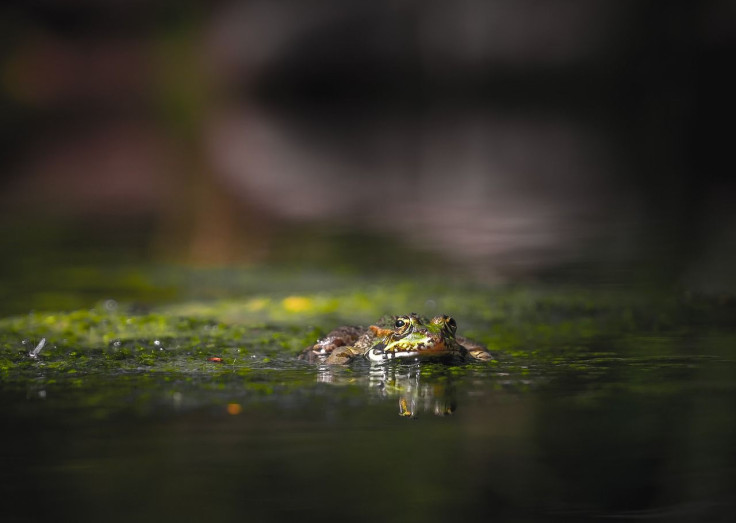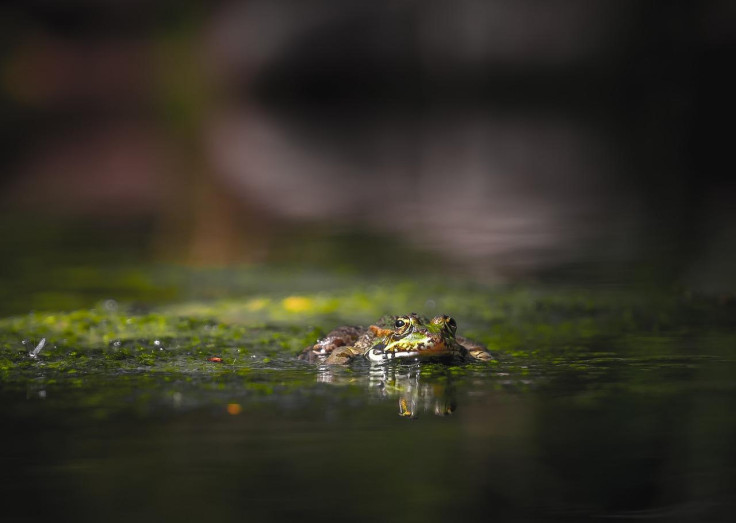Mysterious Frog Species Is The Only One With Teeth On Its Lower Jaw

Researchers have confirmed that an elusive frog species actually has true teeth on its lower jaw, making it the only one out of 7,000 living frog species to have them today. However, learning more about this mysterious trait may be difficult.
The large frog called the Gastrotheca guentheri has quite a few odd characteristics. For one, just like other Gastrotheca species, the G. guentheri doesn't lay its eggs in ponds or streams. As a marsupial frog, it carries its eggs in a pouch on its back and hatches "miniature versions" of the adult, the Florida Museum of Natural History noted in a news release.
What's even more interesting about this species is it has teeth on its lower jaw, a trait that's believed to have vanished in frogs since they first appeared in the fossil record over 200 million years ago. Today, "nearly all frogs lack dentition on the lower jaw (i.e., mandible) and variably possess teeth on the upper jaw and palate," researchers noted in their study published in Evolution.
"Gastrotheca guentheri is renowned as the only frog with teeth on the lower jaw," they added.
The species appearing to have a complete set of teeth has baffled scientists since it was discovered in 1882, according to the museum. Under the biological principle called Dollo's Law, evolution is "not reversible," which means structures or functions that have been lost over the course of evolution don't reappear anymore.
The long-standing principle has been refuted in the past, however. For instance, the researchers of the current study previously found that frogs have lost and regained their teeth on quite a few occasions in their evolutionary history, the Florida Museum noted. Moreover, there are some cases in which frogs developed bony fangs that look like teeth in their lower jaws, although they don't really have the dentin and enamel, which compose true teeth.
But are the G. guentheri's teeth actually true teeth or are they just pseudoteeth? Although it has frequently been used as an example of re-evolution, not a lot is known about its teeth, the researchers noted. This is because the last observation of the species, which is native to the forests of Ecuador and Colombia, was in 1996. Since then, the species has been feared extinct, and there are only a handful of specimens available.
"(G)iven their rarity, biologists are hesitant to subject them to the type of destructive analyses that would be required to study their teeth," Florida Museum noted.
In their analysis, the researchers took advantage of the species' trait of directly hatching froglets. Instead of using one of the few adult specimens, they were able to analyze the species' jaw using a preserved embryo.
Sure enough, the researchers confirmed the presence of true mandibular teeth in the species. In fact, the mandibular teeth were said to be "nearly identical" to the teeth on the upper jaws of other closely related species, "making them more likely to be the real deal," National Geographic noted.
"This was surprising given the extreme length of time since they were lost and regained," study lead author Daniel Paluh of the University of Florida said in the Florida Museum news release. "Our expectation was that if they did regain teeth, they would somehow be different, but that's not what we saw at all."
"Our results suggest that an ancestral odontogenic pathway has been conserved but suppressed in the lower jaw since the origin of frogs, providing a possible mechanism underlying the re-evolution of lost mandibular teeth," the researchers wrote.
Unfortunately, diving deeper into the mystery may be more difficult now that the species is feared to have gone extinct. Even the few specimens available now may not be as helpful since the DNA in museum specimens tends to degrade over time.
"We've seen many species in this group become endangered due to climate change, habitat degradation and chytrid fungus disease," Paluh said as per the museum news release. "We won't be able to answer these questions in any other group because these traits don't exist anywhere else in the frog tree of life."

Photo: Pixabay




















